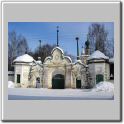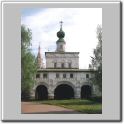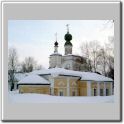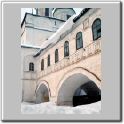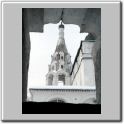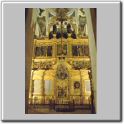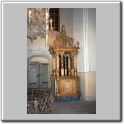|
|
|
|
|
monuments: |
The Michael Archangel monastery |
|
• Church of myrrh-bearing women • Michael Archangel mon. |
The oldest of monasteries of Velikii Ustjug is the Michael Archangel. This monastery was founded in 1212 by the monk Kiprian. Most of stone building were built in the middle of XVII century. The centre of architectural ensemble is the Michael Archangel cathedral with the high bell tower. To the right of the cathedral is the church of the Presentation of Virgin. Between them is arch gallery. There are three small churches, two chapels and two special houses where the head of the monastery and monks lived. The monastery has stone walls which are not very high. The history of monastery counts almost eight centuries. The first wooden cathedral was picturesque and well decorated so it was the most interesting building of old Ustjug. The stone cathedral was built in 1653 - 1656 and the donator was the merchant Nikifor Revyakin. This type of cathedral was unusual at that time. The decoration of the Michael Archangel cathedral is the fine carved gilt iconostasis in which two style - baroque and classicism - were combined. Some icons were brought from the Assumption cathedral. Others, which belonged to this monastery, were almost lost. There are four frescos, which were made in different times. One of them, which was made about 1700, describes what a monk have to do and must not do. The art specialists said what all of these frescos are unique and fully represent the fresco art in XVIII century. At this time the Michael Archangel monastery belongs to the Museum. You can visit this monastery every day but see the cathedral and other buildings only outside. |
|



